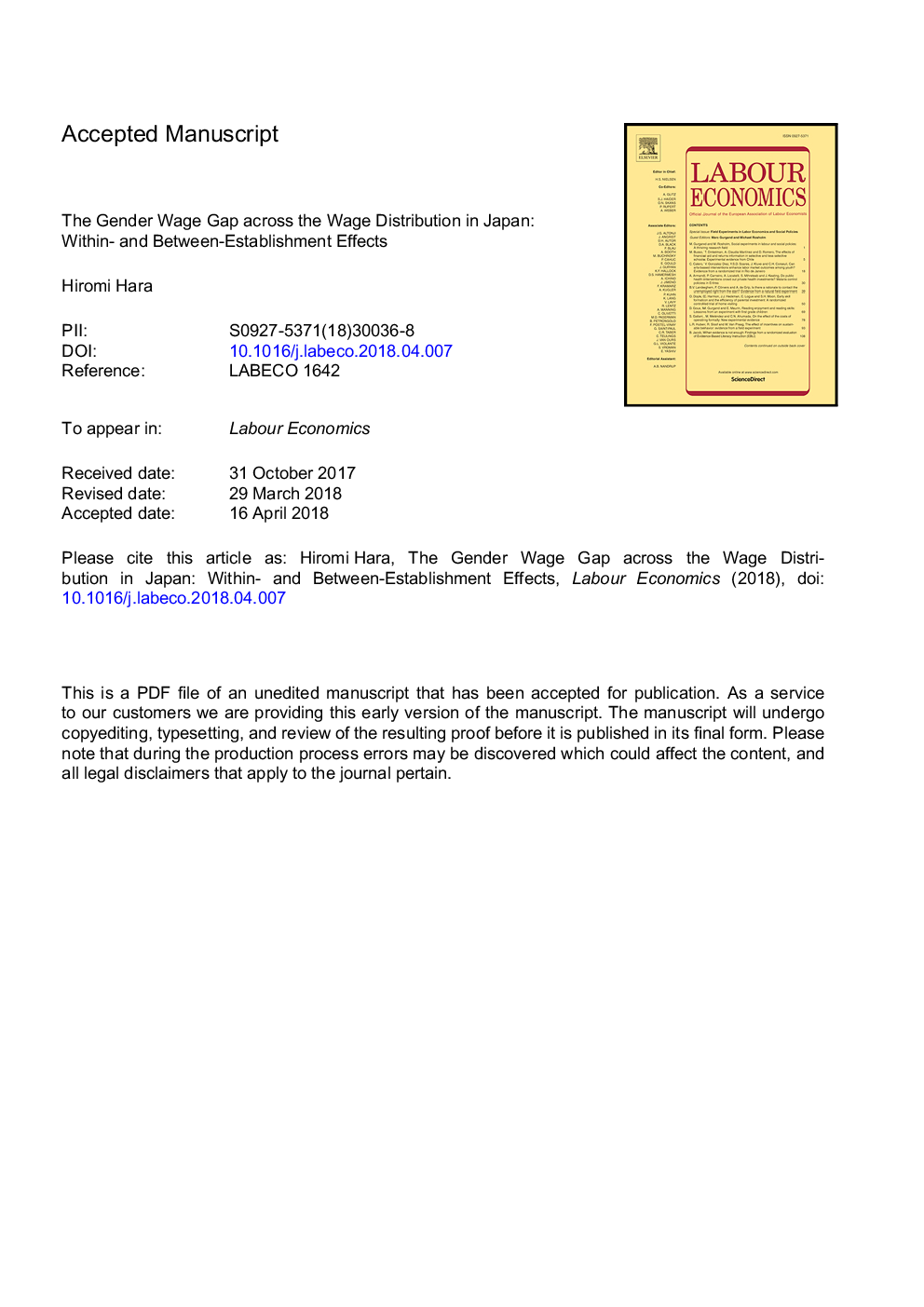| Article ID | Journal | Published Year | Pages | File Type |
|---|---|---|---|---|
| 8948036 | Labour Economics | 2018 | 53 Pages |
Abstract
Although male and female wages have been converging, there still remains a persistent gender wage gap in many countries. To identify what impedes further reductions in this gap, we used Japanese data to conduct a decomposition across the wage distribution, focusing on the wage structure effect, which is the portion of the gender wage gap that is unexplained by gendered differences in human capital. We show that the wage structure effect is larger within an establishment than between establishments and at the tails of the wage distribution than in the middle, indicating that both a glass ceiling and a sticky floor exist within establishments and have for more than 25 years. The sticky floor appears to be largely caused by Japan's gendered career track job segregation system and the glass ceiling by a gender promotion gap and a “swimming upstream” phenomenon. Consequently, any further reduction in the gender wage gap will require a resolution of gender job segregation and a shift towards jobs that reward flexibility.
Related Topics
Social Sciences and Humanities
Economics, Econometrics and Finance
Economics and Econometrics
Authors
Hiromi Hara,
